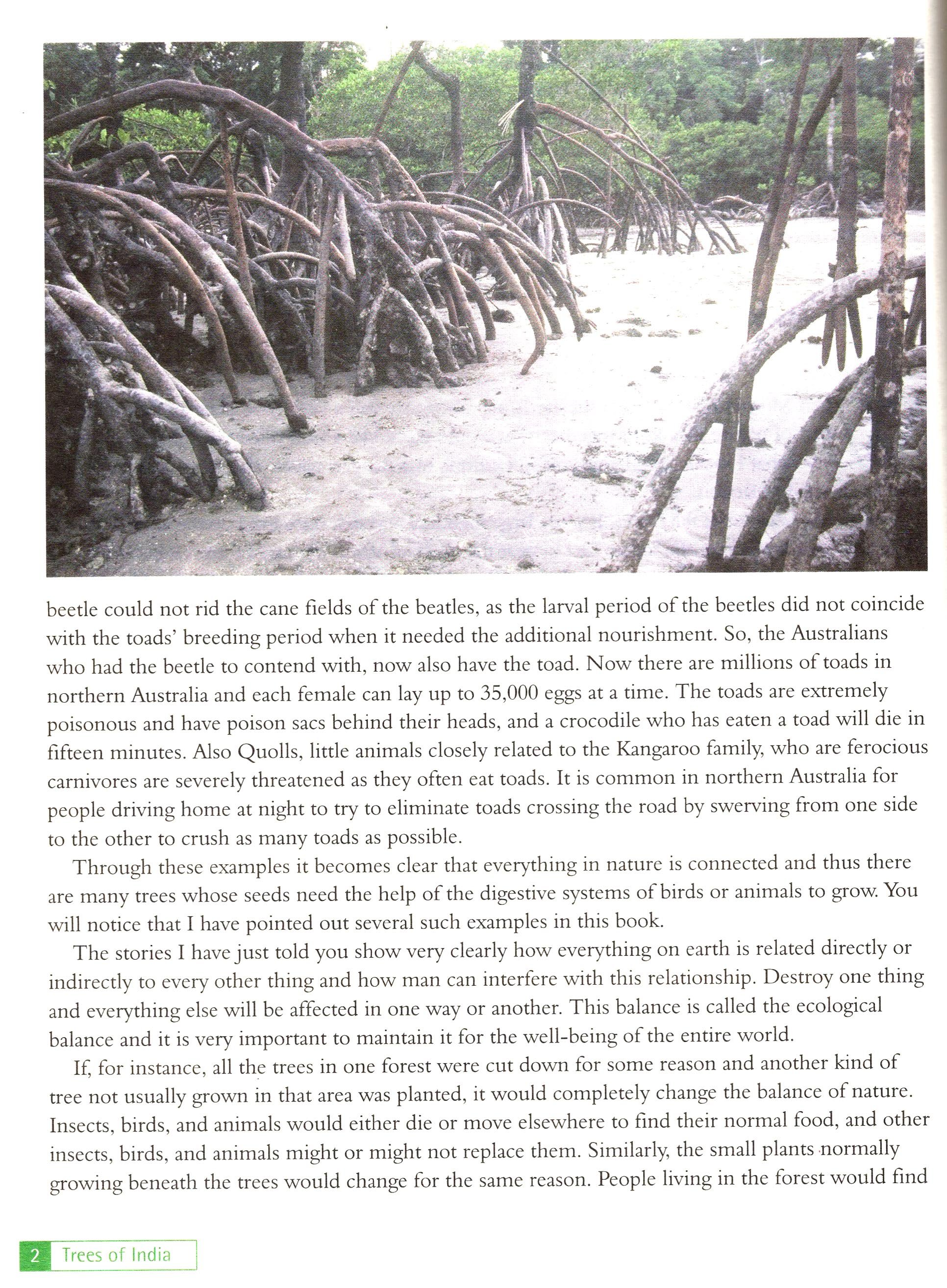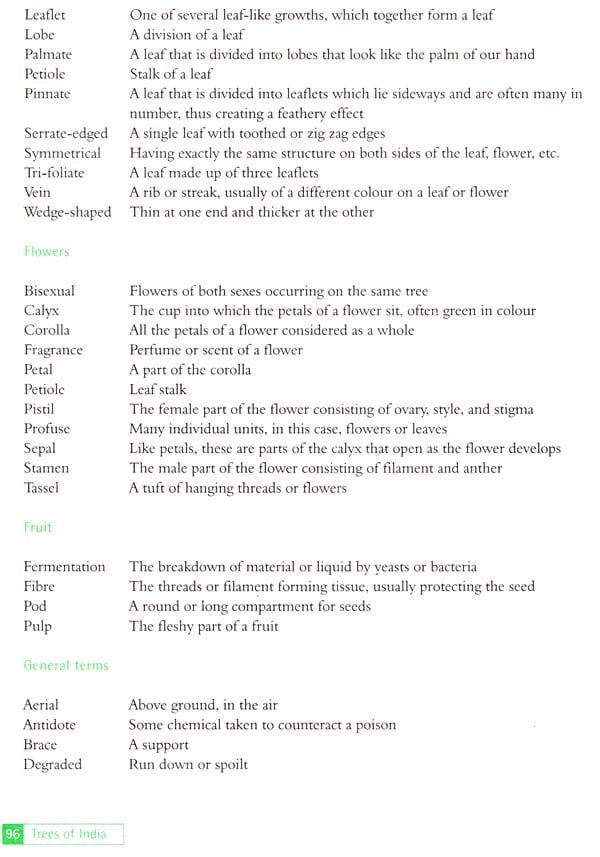
Trees of India
Book Specification
| Item Code: | NAU021 |
| Author: | Pippa Mukherjee |
| Publisher: | Oxford University Press |
| Language: | ENGLISH |
| Edition: | 2014 |
| Pages: | 99 (Throughout Coloured Illustratios) |
| Cover: | PAPERBACK |
| Other Details | 10.00 X 7.50 inch |
| Weight | 250 gm |
Book Description
The purpose of this book is to describe and illustrate, simply, some of the beautiful, eye catching, and useful common trees that we see in India in our everyday lives. These can be seen by road sides, in gardens and parks, or all around the countryside.
I have tried to use simple language and have only explained a few words that might not be in common usage through additional notes in the text. A simple glossary has been included at the end of the book. This is meant to create interest and not to confuse either a child or a non-botanist with complex scientific terms.
I hope that the book will create an awareness and interest, in both young and old alike, and give people an idea of the never-ending, wonderful changes that occur in nature. I have also tried to make a list of the most important uses of trees for man, animals, birds, and, most vitally, for the environment.
I would like to thank Madhu Ramnath and Girija and Viru Viraraghavan for their invaluable help in botany and expert advice on trees in general; Mark Antrobus, for lending some excellent old books to me on trees and their uses; and Bob Granner, for his wonderful proof reading and advice on syntax, grammar, and English usage. I also need to acknowledge the following people for their help with the photographs of the new trees added to the book—Ian Lockwood, Suvir Mirchandani, Kuncelat Keystone Foundation and Bharath Sandur, Manish Chandi, Madhu Ramnath, and Jaap and friends from Auroville. Of course, the book would not have been complete v.ithout the immense care taken by Poonam Kurdekar (Desai), who repainted all the illustrations from the original book to make this volume complete. I cannot thank her enough.
I owe much of the updating of this book to Manjula who has worked for me for over twenty years and has learned from scratch to be an excellent gardener. She has also cooked for me and allowed me to continue my research without any domestic hindrances. Finally, I will be forever grateful to her for having given me not only many insights into the Tamil way of life, but also information about the use of trees in tribal and village culture.
I dedicate the book to my parents, John and Helen, who were responsible for my interest in nature. I would also like to recognize the work of the Palni Hills Conservation Council here. As a member of the Council's committee since 1985, I have been privy to much environmentally sound work by this NGO and I hope the Council will continue in strength over the next generation.
The following books and authors have been most helpful in the rewriting of this book: J.F. Dastur, Useful Plants of India and Pakistan; Sankar Sen Gupta, Tree Symbol Worship in India; E. Blatter and W Millard, Some Beautiful Indian Trees; D.V. Cowen, Flowering Trees and Shrubs in India; C.S. Venkatesh, Our Tree Neighbours; C. McCann, 100 Beautiful Trees of India; K.C. Sahni, The Book of Indian Trees; I. Pleiderer, The Life of Indian Plants; and R.N. Parker, Forty Common Indian Trees. For a very small amount of the up to date material, I have used various websites listed under the different trees. Most of the information, however, comes from first-hand experience during my thirty-five years in India.
**Contents and Sample Pages**









